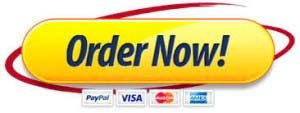Diversity and Inclusion Plan: Transforming Military Culture to Embrace Diversity and Inclusion Imagine that you are an organizational leadership consultant hired by the U.S. military to lead a key initiative to transform the military culture to embrace diversity and inclusion. To accomplish this, you will outline a plan for transforming the culture, focusing on one of the following diversity and inclusion topics of your choice: sex discrimination in the military, racial discrimination in the military, LGBT discrimination in the military, or post-traumatic stress disorder (PTSD), as a combat-induced disability. Your Diversity and Inclusion Plan should be a minimum of 1,000 words (approximately four pages of text; the title page and references page is not included in this page count). You should use a minimum of four academic, peer-reviewed sources for your plan. Use the outline provided below for your Diversity and Inclusion Plan. Outline for the Diversity and Inclusion Plan: Your plan should include the following components. Provide headings that correspond to each of the following. 1. Title page 2. Introduction 3. Objective of the Diversity and Inclusion Plan Indicate the focus of your topic, as an overarching problem within the military culture. Describe your goals for the Diversity and Inclusion Plan Introduce the process you will take to implement this plan. 4. Evaluation of Diversity and Inclusion in the Military’s Culture Describe the current and/or historical trends that relate to your topic within the military’s culture. Explain the problems or trends identified by your resources. Be sure to cite each source using APA style. Describe the dysfunctional thought-behavior patterns of your topic within the military culture. Analyze these patterns in terms of the cycle of Model I values, behaviors, and outcomes (A link to this model is provided in the unit readings). 5. Transforming Stereotypes Using the Smith and Watson (2009) article, develop a plan for transforming stereotypes as they relate to your topic, by applying the A.R.T. approach. Provide subheadings for Awareness, Recognition, and Transformation. For each of these three stages, explain specific strategies you would use to help people overcome their stereotypes related to your topic. Which strategies might you use to honor the diversity of people from the demographic background(s) relating to your topic? Specifically, which strategies would you use to help people become aware of their Model I dysfunctions (as they relate to your topic), recognize alternatives available through Model II, and transform their stereotypes by implementing Model II values? 6. Transforming Behaviors While transforming stereotypes focuses on changing thinking patterns, transforming behaviors focuses on helping people within a culture to change their words and actions. Using the Katz and Miller (2014) article, develop a plan for transforming behaviors, applying at least three of Katz and Miller’s seven “From > To” strategies for transforming organizations. (See the unit lesson and the Katz and Miller [2014] article for more information.) Provide subheadings for each of the three “From > To” strategies you choose to incorporate into your Diversity and Inclusion Plan. For each of these three “From > To” strategies, describe how you would apply Model II values, behaviors, and outcomes to achieve that strategy. Explain how that specific approach could help people within the military culture to transform their behaviors and achieve that “From > To” strategy. Be specific as you describe these three strategies and how you would apply Model II values, behaviors, and outcomes for each strategy. Who would be involved in the process? What would the intervention or change process look like? What would be the indicators for identifying whether or not the strategy was achieved? How would these strategies lead to change among people of all demographics related to your topic within the organization culture of the U.S. military?


